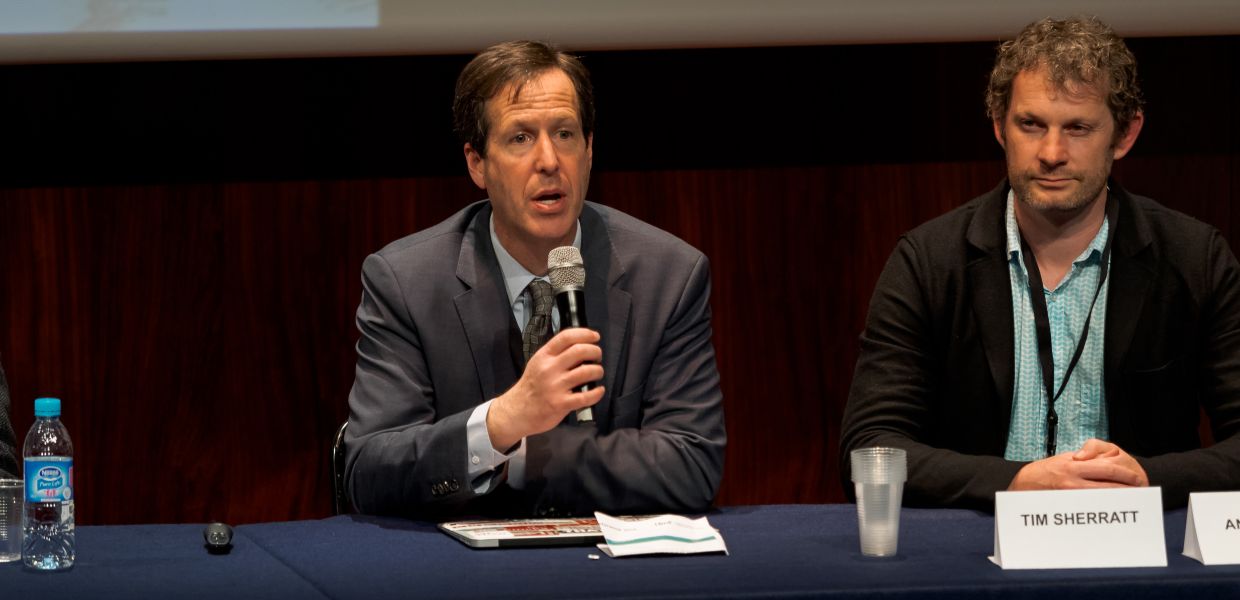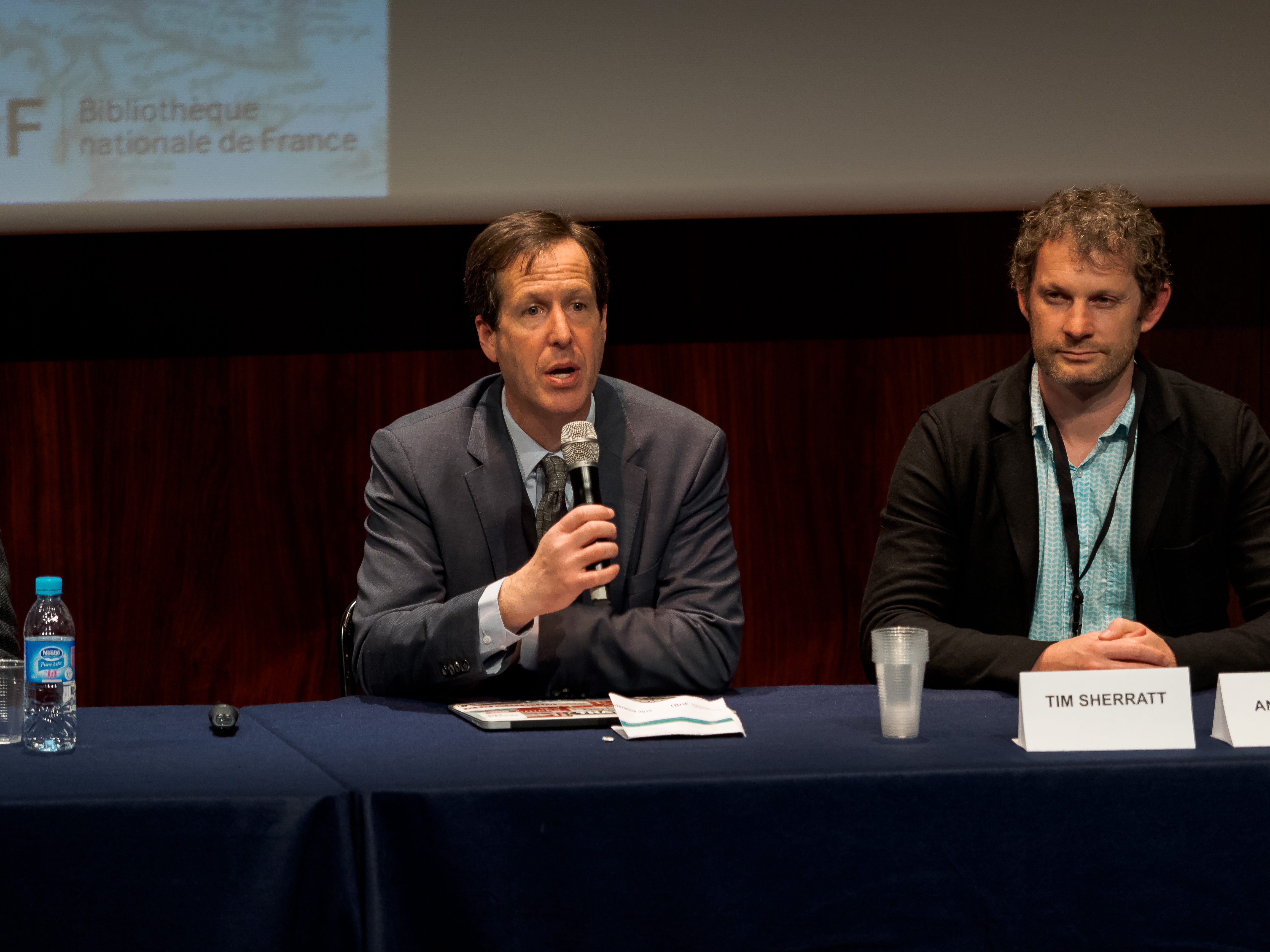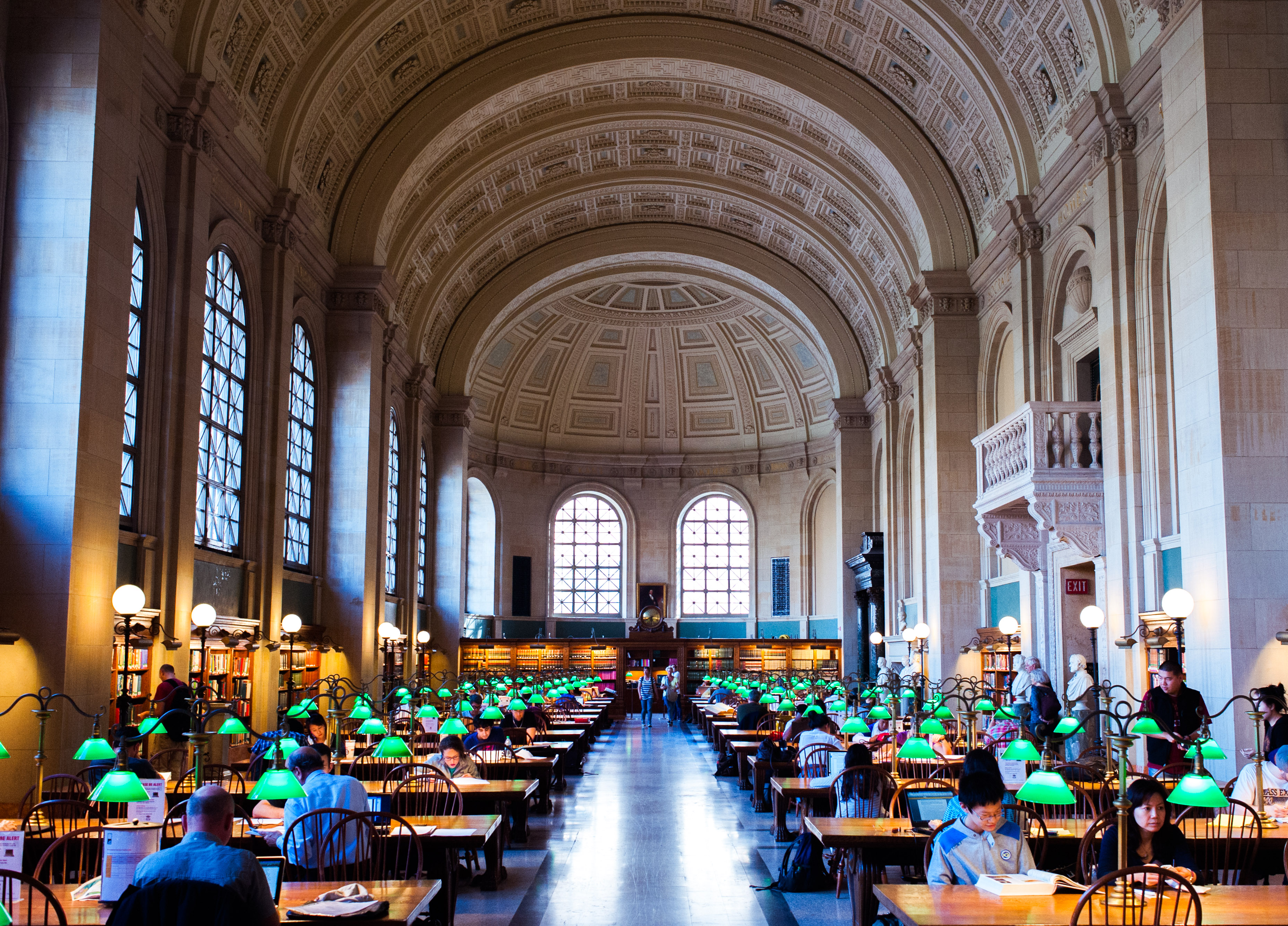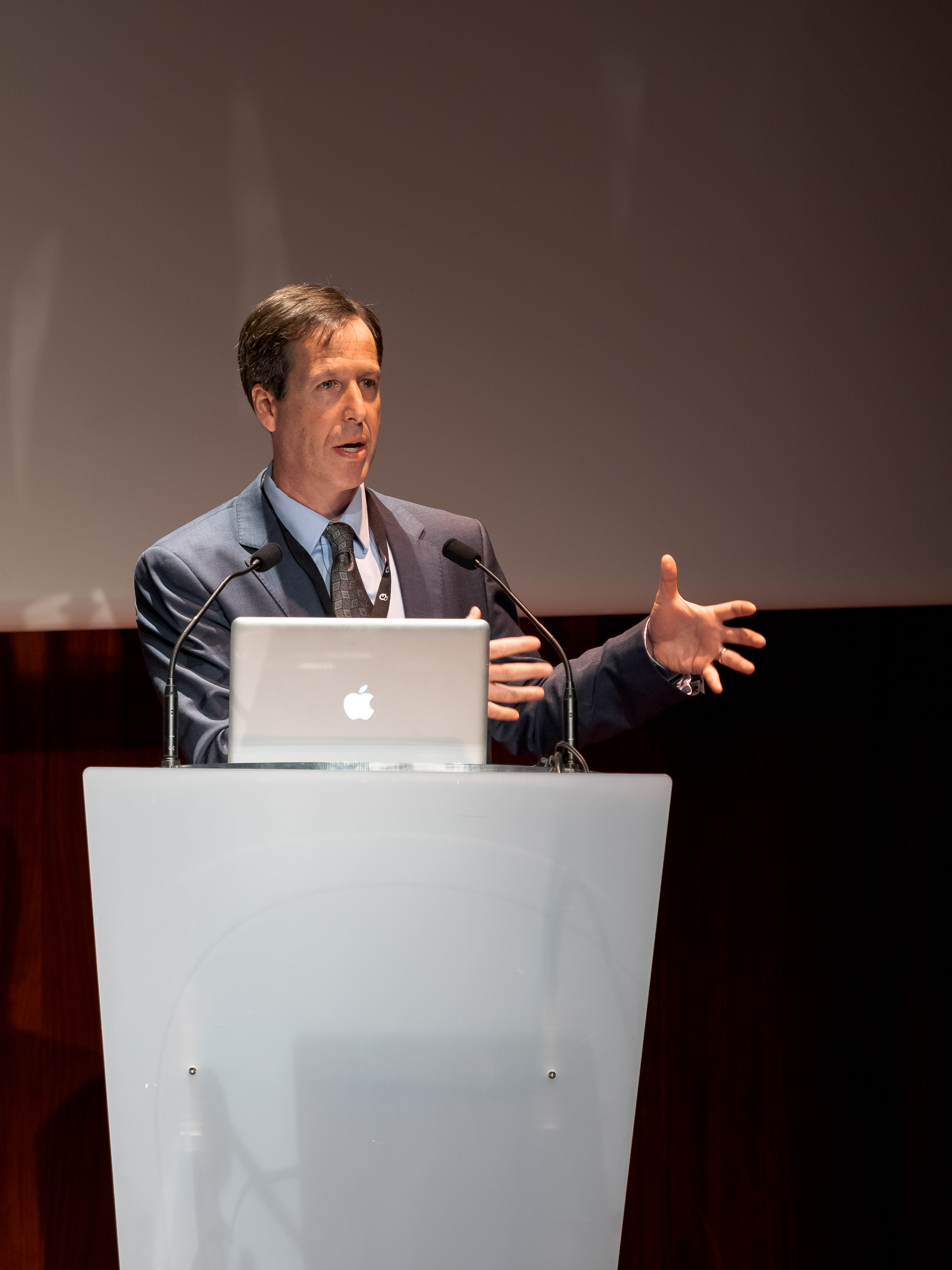Looking to the future with the DPLA: an interview with Dan Cohen

From 11-13 February, the EuropeanaTech conference was held at the National Library of France in Paris. During these two days, Joris Pekel, Europeana’s Community Coordinator for Cultural Heritage, interviewed a number of speakers attending the conference to learn more about their work and their vision for the future of digital cultural heritage. For the first in this series, he spoke to Seb Chan, Director of Digital & Emerging Technologies at Cooper Hewitt, Smithsonian Design Museum.
Here, he talks to Dan Cohen, executive director of the Digital Public Library of America (DPLA), about the work that the organisation is doing, and the challenges and goals it shares with Europeana.
Hi Dan, thanks for taking the time to sit down with me.
Hi, it’s my pleasure.
So, my first question: how are things going with you and the DPLA?
Things are going great. We are preparing for the second anniversary of the DPLA, which was launched in April 2013. It has been a very quick two years where a lot has happened. We have greatly expanded our network, we have greatly expanded the content that we have because of that network, and we have just published our strategic plan for the next three years. Here we talk about what we are going to do between now and 2017 to complete our national network in the United States and also to fill in some gaps that we have in the kinds of content that we offer. So, that way, we really do have a complete record of humanity that exists in collections in the US. So I think it is going extremely well, but we still have a lot of work to do.

Dan Cohen at EuropeanaTech. By Europeana. (CC BY SA)
What are the top priorities in this strategic plan?
Our number one priority is to make sure that we have what we call a ‘service hub’ in every state. Service hubs are really our mini DPLAs and go out and bring online, and make available, content from the small and mid-size institutions that the DPLA headquarters cannot have a direct relationship with. It is really important for us that we have a way for every institution in the US to become part of the DPLA. Until we have a service hub up in every state, we can’t really achieve that. So that is really our top priority: expand our network.
Beyond that, we feel like we have some fields of interest that we think we can make a difference in. We are looking very hard, for example, at what more we can do with our newspapers and e-books. We have two million e-books in our collection right now. Most of them are public domain works but we also have a few hundred thousand books that are from the last century. We want to make the maximum amount of content available to the maximum amount of people so we are looking now into how we can open up more books.
There are other areas as well that require some extra attention such as audiovisual content. Only half a percent of all our content is audio or video so we want to make a big push in that area. That might require us to alter our model a bit. We, for example, talked about setting up some hubs that specialise in video as this kind of content is, in general, more difficult to digitise and make available.
We also have topical gaps. We really want to make sure we have a diverse collection and that means doing special outreach to collection holders that are currently underrepresented.
The final priority that I should mention is obviously the sustainability of the DPLA. We want to be sustainable not only at the headquarters but also as a national network, so we are researching how that might come about. We are currently preparing the talks that we will have with different stakeholders about what might be involved to achieve this.
Great! I would like to talk a bit more about the service hub model. It looks very much like the Europeana Aggregator model, but I guess there are differences as well.
It is a bit broader than just aggregation and I think the word service is a really big part of it. If you look at the application processes, we really do require our service hubs to provide a number of things. Aggregation is part of that but we are also talking about improving the metadata, helping out with the actual digitisation and passing along the information and expertise that we have all acquired while bringing together collections online in a robust fashion. There is a lot of professional networking that takes place as part of that.
For example, DPLA’s headquarters is based in the Boston Public Library and they are also the home to the Massachusetts service hub which is called Digital Commonwealth. They literally go out in a car across the state and go to historic societies, or a small public library. They bring stuff back from that place and scan it in their scanning centre at the library. They then provide hosting and metadata enhancement services so there is a lot that is going on at the service hub’s level. For that reason, and this is where it might differ a bit from the Europeana aggregation model, we often have multiple institutions functioning together as one service hub. There might be the case that in a state there is an institution that has very strong technical expertise but may not have the social connection with the museums. Together, they are much stronger than if they would do it all alone.

Boston Public Library, where DPLA are based. By Brian Johnson via Wikimedia Commons. (Public Domain)
This ties in with my next question. We have a wide variety of aggregators and we are currently exploring how we can improve the aggregation landscape. One of the things we are talking about is getting rid of the name ‘aggregator’ because, very often, they do much more than just that. Moving towards a similar model like the DPLA, where we work with a network of expert hubs, seems sensible as different hubs can have different roles. The DPLA model sounds like different institutions can go to different parts of the hub for different kinds of skills which is quite interesting. Can you tell a bit more about that?
I think, in a very interesting way, we are meeting in the middle looking at our structure. I think what you are saying, about the need for different services and how different institutions can play different roles, is very important. On our end we are also thinking about setting up domain specific service hubs, for example to work on the audiovisual gap, like you have in Europe.
I think what is happening, for example, in New York state is great. Besides a large city, it is also a big state with many smaller cities. For that hub, we actually have nine different institutions all playing different roles. We have the Museum of Modern Art which is part of it and connects with dozens of other museums. Also, a library network is a part of it and connect hundreds of different libraries, and those are the institutions that we, as DPLA, could never have reached out to by ourselves. I think a lot what we do, what we both do, is to think about what the best matches are for different situations and feel out what those models might look like. We are so young still, that, in a sense, we are working on these models but we have now accumulated some expertise to take this further.
And what I love about working with Europeana is that we can trade stories, we can trade models, we can trade technologies etc. in order to get this done. Inevitably I think it is going to be a very heterogeneous environment that we end up with and I think we can learn a lot from each other.
What is the incentive for an institution to become a service hub?
This is a big challenge. We have had some service hubs that were started with specific grants from funders. So we will continue going out and look for both public and private money that can support or launch the service hubs in specific states or regions. On the incentive side - I think we have been very lucky to have had such a successful launch and first phase so we now have people coming to us that want to become a service hub.
Having said that, to actually complete the entire network across all states we will need to have some incentives, like for example small sub grants we can hand out. But we have to articulate better, and I think this will become really key for us in the long run: why it is useful for organisation to be a part of the DPLA and what they can get out of it?
One of the big things we see is that we drive traffic to these places. When institutions have gone through a great expense of putting their collections online they want to see this material being used and accessed. So, being part of the DPLA has the basic incentive of the collection becoming more discoverable and more visible to more people. But there is much more to it than just that. It won’t just be about visibility, but also about gaining technical knowledge and being part of a network. So I think there will be a lot of components to that and we are in a sense setting that up right now.
Another thing that institutions can benefit from is metadata normalisation and improvement with the use of Linked Open Data. When I go around in the United States there are a lot of institutions that want to be involved with linked data but do not really know how to start. So if we can provide that service or connection behind the scenes that means that it becomes easier for them to make that step.

Dan Cohen at EuropeanaTech. By Europeana. (CC BY SA)
We are nearly at the end of the conference. What is the main thing you picked up during the two days?
I think what is great about this conference is that it brings together lots of different people with different backgrounds. We are trying to do that as well with our own DPLAfest that we are organising in April. I think having people from different domains is really valuable. For instance in the US I don’t think that museum folks often talk to library folks. We have separate conferences for both groups. Same goes for academic and public libraries. These things tend to be in separate areas but what I think is amazing about the digital realm is that it presents the opportunity to seamlessly bring together these kinds of content, users, and also software developers. I think that there are really interesting things going on in technology. We just heard, for example, someone from Google who is working on cognitive search. I think we can learn a lot from them. We tend to think we are from different domains and backgrounds, but really, we are all working towards a similar goal to get the material out there to the public in the best way possible. And that, at the end of the day, is what is really important.
Right, and we keep doing that. Thanks a lot for taking the time to see us, and good luck with all your work.
Thanks, and stay in touch.
